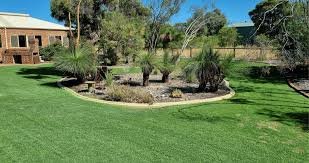Discover the Benefits of Australian Grass for Your Lawn

Australian grass species are renowned for their distinctive characteristics that set them apart from grasses found in other parts of the world. One of the most notable qualities is their resilience to the harsh climatic conditions prevalent in Australia, including extreme heat and drought. Species such as Couch grass (Cynodon dactylon) and Kikuyu grass (Pennisetum clandestinum) have evolved to thrive in environments where water is scarce, making them ideal choices for homeowners looking for sustainable landscaping solutions.
These grasses possess deep root systems that allow them to access moisture from deeper soil layers, enabling them to survive prolonged dry spells while maintaining a lush appearance. In addition to their drought resistance, Australian grasses exhibit remarkable tolerance to foot traffic and wear. This durability makes them particularly suitable for high-traffic areas such as sports fields, parks, and residential lawns.
For instance, the Buffalo grass (Stenotaphrum secundatum) is known for its ability to recover quickly from damage, making it a popular choice for families with children and pets. Furthermore, many Australian grass varieties are characterized by their vibrant green hues and fine textures, which contribute to a visually appealing landscape. The combination of resilience, durability, and aesthetic qualities makes Australian grass a unique and valuable asset for both residential and commercial landscaping.
The Environmental Benefits of Australian Grass
The environmental advantages of using Australian grass extend beyond mere aesthetics; they play a crucial role in promoting ecological balance. One significant benefit is their ability to improve soil health. The deep root systems of many Australian grass species help prevent soil erosion by stabilizing the soil structure.
This is particularly important in regions prone to heavy rainfall, where loose soil can easily wash away, leading to sedimentation in waterways and loss of fertile land. By planting Australian grasses, homeowners can contribute to soil conservation efforts while enhancing the overall health of their local ecosystems. Moreover, Australian grasses are adept at sequestering carbon dioxide from the atmosphere, thus playing a role in mitigating climate change.
Through the process of photosynthesis, these grasses absorb CO2 and store carbon in their biomass and soil. This natural carbon sequestration process is vital in combating greenhouse gas emissions and promoting a healthier environment. Additionally, many Australian grass species are native to the region, which means they are well-adapted to local conditions and require fewer resources to thrive.
This native adaptability reduces the need for chemical fertilizers and pesticides, further minimizing environmental impact and promoting biodiversity.
The Low Maintenance and Durability of Australian Grass
One of the most appealing aspects of Australian grass is its low maintenance requirements. Homeowners often seek landscaping solutions that do not demand excessive time or resources, and Australian grasses fit this criterion perfectly. For instance, varieties like Couch grass are known for their self-repairing capabilities; they can quickly recover from damage caused by foot traffic or adverse weather conditions.
This resilience means that homeowners can enjoy a beautiful lawn without the constant need for re-seeding or extensive care. In addition to their self-sufficiency, many Australian grasses are drought-tolerant, which translates into reduced watering needs. This characteristic is particularly beneficial in regions where water conservation is a priority.
By choosing drought-resistant varieties, homeowners can maintain a lush lawn while significantly lowering their water consumption. Furthermore, these grasses often require less frequent mowing compared to traditional turf varieties, saving both time and energy. The combination of low maintenance and durability makes Australian grass an attractive option for those seeking a hassle-free landscaping solution.
The Aesthetic Appeal of Australian Grass
The visual appeal of Australian grass cannot be overstated; it offers a diverse range of colors, textures, and growth habits that can enhance any landscape design. For example, the fine-bladed texture of Couch grass creates a smooth, carpet-like appearance that is both inviting and elegant. In contrast, if you buy Eureka Kikuyu grass, it boasts a coarser texture with a vibrant green hue that can add a lively touch to gardens and lawns alike.
This variety allows homeowners to select the type of grass that best complements their personal style and the overall aesthetic of their property. Moreover, the seasonal changes in color and growth patterns of Australian grasses can add dynamic beauty to outdoor spaces throughout the year. During warmer months, these grasses flourish, creating lush green expanses that invite outdoor activities and gatherings.
In cooler months, many varieties maintain their color or transition into rich autumnal tones, providing visual interest even as temperatures drop. The ability to create a visually appealing landscape with minimal effort makes Australian grass an excellent choice for homeowners looking to enhance their outdoor spaces.
The Adaptability of Australian Grass to Various Climates
Australian grasses are celebrated for their remarkable adaptability to a wide range of climatic conditions. From the arid outback to coastal regions with high humidity, these grasses have evolved to thrive in diverse environments. For instance, Couch grass is particularly well-suited for warmer climates where it can withstand high temperatures and limited water availability.
Its ability to enter dormancy during extreme drought conditions allows it to survive until more favorable weather returns. Conversely, some species like Buffalo grass are more tolerant of cooler temperatures and can thrive in subtropical regions. This adaptability means that homeowners across Australia can find suitable grass varieties that will flourish in their specific climate zones.
Additionally, the ability of these grasses to withstand varying levels of salinity makes them ideal for coastal areas where salt spray can be an issue. By selecting the right type of Australian grass for their local conditions, such as a small function centre in Bassendean or a large apartment block in Tasmania.
The Economic Benefits of Using Australian Grass for Your Lawn
Investing in Australian grass can yield significant economic benefits for homeowners over time. One of the primary advantages is the reduction in maintenance costs associated with these hardy varieties. Because many Australian grasses are drought-tolerant and require less frequent mowing, homeowners can save on water bills and landscaping services.
This cost-effectiveness is particularly appealing in regions where water scarcity is a concern or where labor costs for lawn care can add up quickly. Furthermore, the long-term durability of Australian grasses means that they often outlast traditional turf varieties, reducing the need for frequent replacements or extensive repairs. This longevity translates into savings on both materials and labor over time.
Additionally, by choosing native grasses that require fewer chemical inputs for fertilization or pest control, homeowners can further decrease their overall landscaping expenses while promoting environmental sustainability. The economic advantages of using Australian grass extend beyond immediate savings; they contribute to a more sustainable approach to lawn care that benefits both homeowners and the environment alike.





